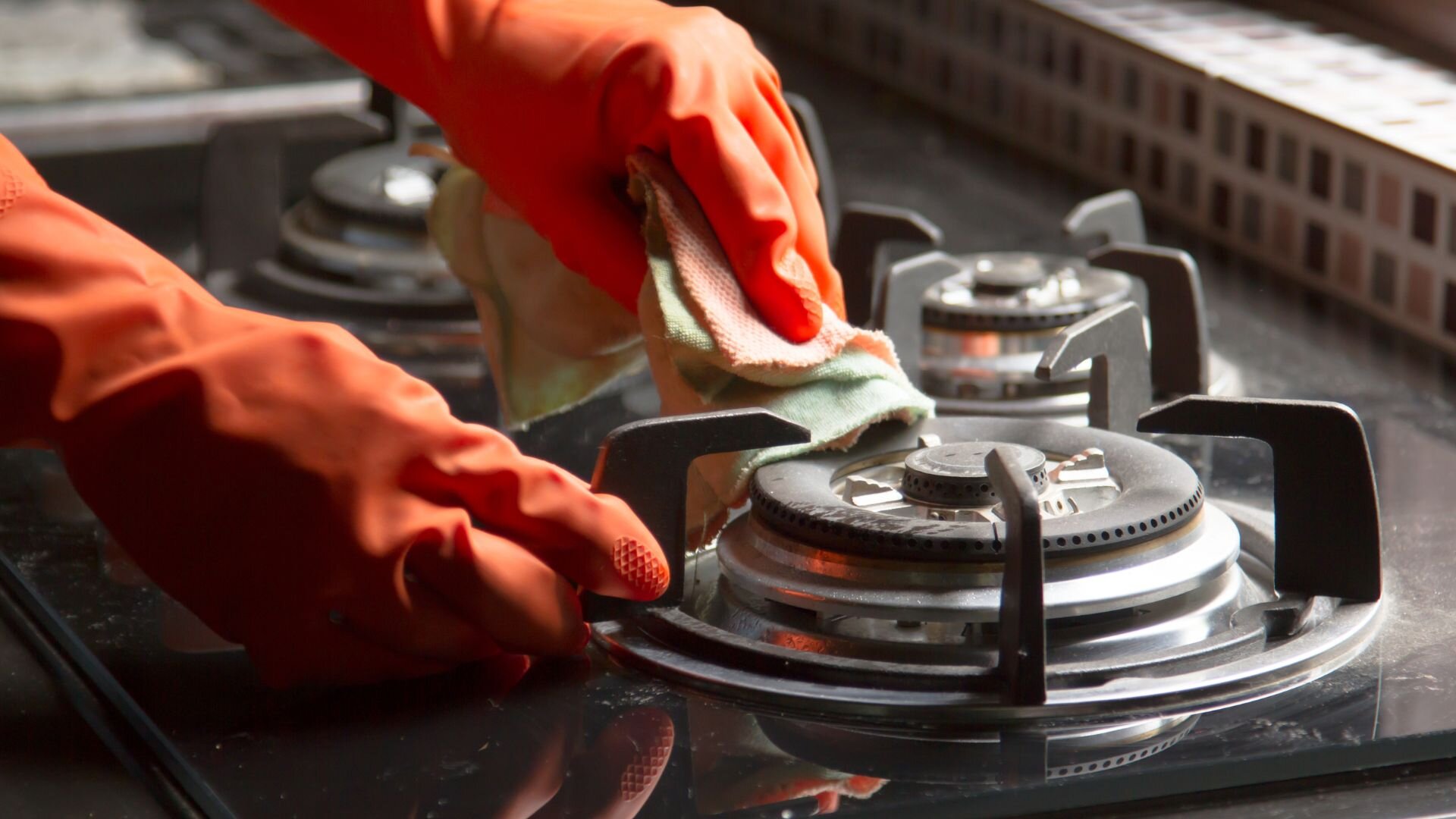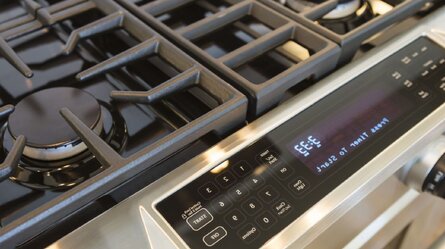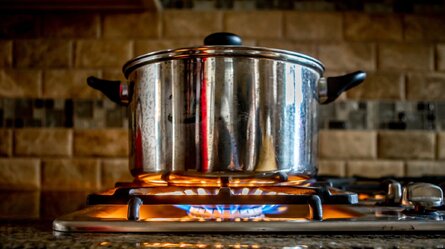Did you know the average household stove top harbours more bacteria than a toilet seat? It’s not the kind of trivia you want to think about while making dinner, but it’s a wake-up call many Aussies overlook. Gas ranges are used daily, yet often escape the regular attention our sinks or benches get.
Between spills, splatters, and that sneaky build-up of grease, your gas stovetop can quickly become a breeding ground for germs—and a hazard waiting to happen.
Keeping your gas stove clean isn’t just about appearances. It helps prevent blocked burner heads, improves flame efficiency, and extends the life of your appliance. Plus, a spotless stove makes cooking more enjoyable.
In this guide, you’ll learn how to clean your gas stove from top to bottom. We’ll tackle burnt-on grime and greasy gas stove grates and show you how to keep those burners firing perfectly.
Prep Your Gas Stove the Right Way
A clean gas stove doesn’t start with scrubbing—it begins with preparation. Jumping in too quickly can lead to damage, missed spots, or even safety hazards. Take a few minutes to set it up properly, and you’ll thank yourself later.
Here’s what to do before you begin cleaning:
- Turn off the gas supply at the wall to ensure no gas flows while working on the stove.
- Make sure all gas burners and burner caps are completely cool before touching or removing anything.
- Unplug the appliance if your model has an electric ignition or electronic display. Safety first.
- Remove all gas stove grates, burner heads, and knobs to allow full access to every surface.
- Gather your cleaning supplies so everything’s within reach. You’ll need:
- Dish soap
- White vinegar
- Baking soda
- A soft brush or toothbrush
- Microfiber cloths
Skipping these steps can cost time—and possibly your stove.
Step-by-Step: How To Clean Your Gas Stove Like a Pro

Now that your stove is prepped, it’s time to roll up your sleeves. Deep cleaning your gas cooktop isn’t difficult—it just takes the right steps, a little patience, and the right approach for each part. Follow this guide to get your stove top looking like new and working safely.
a. Wipe Down the Stove Top Surface
- Use a damp cloth with mild dish soap to remove crumbs, grease splatters, and cooking residue.
- Focus around the stove burners, knobs, and edges where grime tends to collect.
- Avoid abrasive pads that can damage stainless steel or enamel finishes.
- If your stove has drip pans, take them out and clean them separately using the same method.
b. Soak and Scrub Burner Parts
- Place burner heads, burner caps, and other small parts into a bowl of hot water with dish soap.
- Let them soak for 15–20 minutes to loosen the grime.
- Use a soft toothbrush to scrub around openings and remove debris from crevices.
- Ensure ports are clear to allow proper gas flow and even flame.
- Before reassembling, make sure all parts are dry—especially near the gas valve and standing pilot light (if your stove has one).
c. Deep Clean the Gas Stove Grates
- For cast iron grates, make a paste with baking soda and water.
- Spread over the grates, focusing on areas with stubborn stains or burnt-on residue.
- Let sit before scrubbing with a non-abrasive brush.
- Rinse with warm water and dry thoroughly before placing them back on the stove top burners.
d. Detail the Knobs and Controls
- Spray cleaner onto a cloth—not directly onto the panel—to avoid moisture reaching the electricals.
- Wipe around the knobs and switches carefully. For an electric stove, take extra care around sensitive components.
- Don’t rub too hard, or you risk wearing away printed labels or damaging delicate areas.
Common Mistakes People Make When Cleaning Their Stove Top
Even with the best intentions, cleaning a gas stove can go wrong fast. Avoiding a few common missteps can protect your appliance and keep it performing safely and efficiently. Here’s what to steer clear of when tackling the cooktop surface:
- Spraying water or cleaner directly into burner ports or the gas tube can lead to blockages or ignition failure. Always use a damp microfiber cloth or spray onto the cloth first.
- Reassembling parts before fully drying risks trapping moisture inside the gas ranges.
- Using oven cleaners or highly abrasive chemicals may corrode finishes or dull stainless steel. Stick with mildly abrasive cleaner soap or soapy water.
- Neglecting burner heads causes uneven flames. Use a small gauge wire to clear clogged ports.
- Skipping fresh spills or burnt food for later leads to tough build-up. A non-abrasive scrub pad, cooktop scraper, and this step-by-step guide will keep food residue under control.
Natural Cleaning Hacks for Stubborn Stains and Built-Up Grease
You don’t need harsh chemicals to make your gas stove look spotless. In fact, many pantry staples can tackle stubborn stains, stuck-on food, and grease without harming your cooktop or affecting indoor air quality.
Try these gentle, eco-friendly methods:
- Vinegar and lemon juice make an excellent all-purpose cleaning solution for everyday spills. Mix equal parts in a spray bottle, apply to the surface, and wipe clean with a soft cloth or microfiber cloth.
- For heavier grime, combine baking soda with hydrogen peroxide to form a paste. Apply it to the affected areas and let it sit for 15 minutes before scrubbing.
- A damp cloth microwaved for 30 seconds creates an easy steam cleaning method—just lay it over the mess and let it soften hardened grease.
- Use a soft-bristle brush to protect enamel or cast iron finishes. Avoid steel wool, which can leave scratches.
- Add a dash of vinegar to your soapy solution for a mild degreaser, and rinse with warm water.
Natural, simple, and effective.
How Often Should You Clean Your Gas Stove and Burners?

Keeping your stove in top condition is all about timing. Consistent cleaning stops grime from building up and ensures your appliance stays safe and efficient.
- Daily: Wipe down the surface and control knobs after cooking to prevent food splatter from hardening.
- Weekly: Remove and wash grates, gas stove burners, and drip trays. This keeps airflow steady and your flames even.
- Monthly: Deep clean the full cooktop, soak components, and scrub any build-up. Take extra care to clean gas stove burners and check the gas valve prior to reassembly.
Staying on top of this routine helps you easily clean gasstove burners—and extends your appliance’s life.
What To Do If Your Gas Burners Aren’t Lighting Properly
If your burners won’t ignite or the flame seems weak, don’t panic—it’s often a simple fix. Blocked burner heads are among the most common reasons for ignition issues, especially if you’ve skipped a few cleans.
- Make sure you’ve turned off the gas supply before doing anything.
- Remove the burners and gently clean burner heads using a straightened paperclip or soft brush to clear clogged ports.
- Check for moisture left behind from cleaning. Damp components can stop the burner from lighting.
- If you still can’t get it going, the issue might lie deeper in the system—such as faulty igniters or inconsistent gas flow.
- Avoid forcing the ignition or repeatedly turning the knob. Safety first.
Regular upkeep and a clean stove make a big difference in how reliably your burners perform.
The Difference Between Cleaning and Maintaining Your Gas Stove
There’s a key difference between cleaning and maintaining your gas stove—both are essential if you want it running safely and efficiently.
Cleaning involves removing grease, spills, and residue from the burner parts, base, and surrounding surfaces. After using gentle products, use a clean or dry cloth to wipe away grime—avoid harsh rust removers unless absolutely necessary.
On the other hand, maintenance means checking the gas flow, inspecting for damage, and ensuring smooth ignition. If you notice discoloured flames, odd smells, or uneven heating, it’s time for a closer look. If needed, use a straightened paper clip to gently clear blocked ports.
Keep your grates clean, gently lift parts to inspect connections, and call a licensed technician when in doubt. Staying proactive keeps your stove safer—and saves money down the track.
When To Call a Professional for Gas Stove Top Services
Notice a strong gas smell or flames that flicker unevenly? These are signs something’s not right.
If your burners won’t ignite after a proper clean, or you spot corrosion, loose fittings, or damage beneath the surface, it’s best not to go poking around. Internal faults in gas ranges should only be handled by licensed professionals.
Attempting repairs without the right tools or knowledge can lead to bigger problems—and safety risks.
A professional service brings peace of mind, ensures compliance with gas regulations, and saves you time. It is perfect for households that want their stoves to run smoothly without the hassle or guesswork.
Sparkling Clean Gas Stove, Happy Kitchen
Knowing how to clean your gas stove properly keeps your kitchen safer, your meals tastier, and your appliance running at its best. Clean gas means fewer issues, better performance, and a more enjoyable time at the cooktop. It doesn’t need to be complicated—just a bit of regular effort.
Still, having trouble or prefer to leave it to the experts? At Woolf Plumbing, we offer reliable hob top services across all leading brands. From deep cleans to burner fixes, our local team is here to help. Reach out today, and let us get your stove shining and firing like new.




